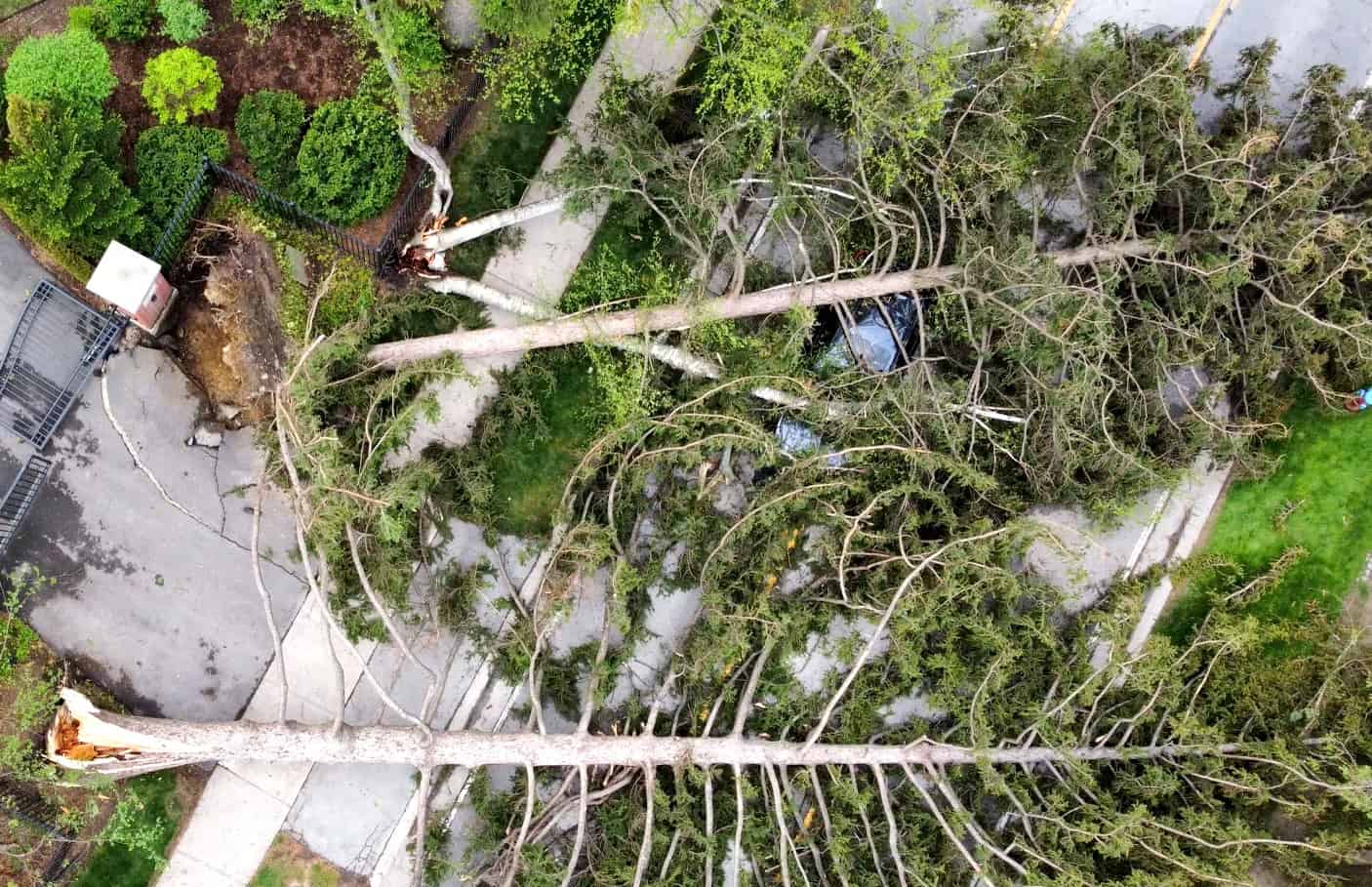Storm that swept through Mississauga and Brampton became category-2 tornado in Uxbridge
Published May 24, 2022 at 6:45 pm

It is official: Uxbridge was hit by a tornado.
Residents of the Durham Region community left “reeling” from the devastating “Derecho” storm last Saturday may scarcely need confirmation. But weather experts with the Northern Tornadoes Project (NTP) from Western University, who are working on damage surveys across Ontario, conducted a preliminary assessment on Sunday, the day after the storm ripped through. In their considered view, the storm was an EF2, or category-2 tornado.
“The NTP has determined that the significant damage was a 4.26-km narrow path, caused by an EF2 tornado with a maximum width of 60 metres and a maximum estimated wind speed of 195 km/h,” Instant Weather Ontario conveyed in a Twitter thread.
“Our thoughts remain with those affected from Saturday’s storm and the family & friends of those who passed.”
The EF scale ranks how extreme a tornado was after its impact has been determined on a 0 to 5 scale (or EF0 to EF5). An EF2 tornado — or category-2 — can involve winds of 178 to 216 kilometres per hour, which is enough to tear the roof off of a house. At least 10 people across Ontario died as a result of the extreme weather event.
3/3… 260 metres and a maximum estimated wind speed of 195 km/h.
Our thoughts remain with those affected from Saturday's storm and the family & friends of those who passed.
– Adam & Alannah
P.S. Photo courtesy of @westernuNTP
— Instant Weather Ontario (@IWeatherON) May 24, 2022
On its event dashboard, the NTP describes the effect the tornado had in Uxbridge.
“Structural and tree damage reported in Uxbridge after a storm passed through the area,” it says. “Two apartment buildings, several homes and business buildings suffered damage. Two vehicles were also flipped and/or rolled several feet. Numerous trees were snapped and uprooted. No major injuries requiring treatment have been reported.”
Moving up from the United States into southwestern Ontario, the “Derecho” storm system intensified as it rapidly moved east. While Hamilton was slightly scathed, the storm truly began to cause damage in Mississauga and Brampton.
The national capital region around Ottawa was also particularly hard hit. Some areas of that city were coming up on nearly 72 hours without hydro as of Tuesday afternoon.
The NTP was formed five years ago, in 2017, as a partnership between Western and ImpactWX. Its aim is “to better detect tornado occurrence throughout Canada, improve severe and extreme weather understanding and prediction, mitigate against harm to people and property, and investigate future implications due to climate change.”
Climate change exacerbates the frequency and severity of extreme weather events. The NTP’s tracking shows that the number of tornadoes across Canada was almost three times higher in both 2020 and ’21 than in 2017. Ontario, which includes the southernmost points of the nation and also along the Great Lakes watershed, also accounts for a larger share of the tally than it idd initially.
| Tornadoes | Canada | Ontario |
|---|---|---|
| 2017 | 34 | 6 |
| 2018 | 66 | 32 |
| 2019 | 72 | 17 |
| 2020 | 103 | 66 |
| 2021 | 100 | 60 |
| Source: Northern Tornadoes Project |
There were 100 tornadoes across the nation in 2021, including 60 in Ontario. The year prior, there were 103, including 66 in Ontario.
Back in 2017, the year NTP was created, it confirmed 34 tornadoes across Canada. Only six were pinpointed to parts of Ontario.
insauga's Editorial Standards and Policies advertising





